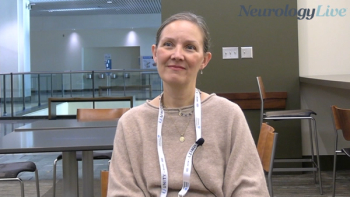
Dopamine Transporter Deficiency Syndrome Gene Therapy BGT-DTDS Gets FDA Rare Pediatric Disease Designation
Bloomsbury Genetic Therapies’ BGT-DTDS, a neuron-targeted and AAV2-mediated therapy, previously received orphan drug designation from the FDA and EC.
Bloomsbury Genetic Therapies’ BGT-DTDS, an investigational adeno-associated virus (AAV) vector-based
BGT-DTDS is neuron–targeted and utilizes an AAV2 vector. It is designed to be delivered via a 1-time injection in the substantia nigra and ventral tegmental area. In addition to rare pediatric disease designation, the gene therapy has received orphan drug designation (ODD) from the FDA and the European Commission. Both ODDs were granted in January 2023.
“DTDS is a devastating disease with poor prognosis and pediatric patients living with DTDS face a significant unmet need with no disease-modifying treatments or approved therapies currently available,” Adrien Lemoine, the cofounder and CEO of Bloomsbury said in a statement.1 “Obtaining rare pediatric disease designation is another acknowledgement of the serious and life threatening manifestations of this rare disease, and supports our mission to provide BGT-DTDS as a potential new treatment for patients suffering from DTDS.”
Bloomsbury has completed preclinical efficacy research on the gene therapy and is making moves towards clinical trial initiation. On March 1, 2023, the company held a scientific advice meeting with the UK’s Medicines and Healthcare products Regulatory Agency (MHRA) in order to confirm that the preclinical research conducted to date is sufficient for the initiation of a clinical trial for the therapy.2 Bloomsbury also announced that the MHRA gave an opinion supportive of clinical trial initiation based on the preclinical efficacy data presented at the meeting and precedents established with regard to other intraparenchymal AAV2 gene therapies, with a gene therapy for aromatic l-amino acid decarboxylase deficiency specifically cited. As a result of the meeting, the company plans to submit a combined clinical trial and ethics committee application to the MHRA in 2024 for a phase 1/2/3 registrational trial.
Bloomsbury noted that the submission is dependent on completion of a GMP manufacturing campaign that will be carried out in collaboration with a contract development and manufacturing organization. The company stated that it also plans to engage with the FDA and European Medicines Agency with the intent of expanding clinical development of BGT-DTDS to the United States and European Union.
“We were grateful to have had this constructive dialogue with the MHRA,” Lemoine said in an April 2023 statement.2 “It confirmed that our preclinical program includes all the studies and data needed to progress the BGT-DTDS program into the clinic. We see this outcome as a validation of our development strategy, both for BGT-DTDS and across our portfolio—namely, relying on platforms based on derisked capsids/routes of administration to deliver accelerated clinical translation and capital-efficient development. We expect to see further benefits resulting from our approach as we progress our programs to registration.”
Bloomsbury Genetic Therapies, which originally launched in October 2022 with £5 million in seed financing, has gene therapies in development for several other indications.3 The company’s lead program is BGT-OTCD, a gene therapy intended to treat ornithine transcarbamylase deficiency. A clinical trial application for this therapy was submitted in December 2022.4 The company also has preclinical stage gene therapies in development for Niemann-Pick disease type C and infantile neuroaxonal dystrophy.5 Furthermore, Bloomsbury is also exploring the potential of BGT-DTDS to treat
REFERENCES
1. Bloomsbury Genetic Therapies receives rare paediatric disease designation from the U.S. FDA for BGT-DTDS for the treatment of dopamine transporter deficiency syndrome (DTDS). News release. Bloomsbury Genetic Therapies Limited. May 3, 2023. Accessed May 10, 2023. https://bloomsburygtx.com/bloomsbury-receives-rare-paediatric-disease-designation-from-the-u-s-fda-for-bgt-dtds-for-the-treatment-of-dopamine-transporter-deficiency-syndrome-dtds/
2. Bloomsbury genetic therapies completes successful scientific advice meeting with the MHRA regarding its BGT-DTDS program. News release. Bloomsbury Genetic Therapies Limited. April 26, 2023. Accessed May 10, 2023. https://bloomsburygtx.com/bloomsbury-genetic-therapies-completes-successful-scientific-advice-meeting-with-the-mhra-regarding-its-bgt-dtds-program/
3. Bloomsbury Genetic Therapies launches with Seed financing of £5 million to develop potentially curative gene therapy treatments for rare neurological and metabolic diseases. News release. Bloomsbury Genetic Therapies Limited. October 7, 2022. Accessed May 10, 2023. https://bloomsburygtx.com/bloomsbury-genetic-therapies-launches-with-seed-financing-of-5-million-to-develop-potentially-curative-gene-therapy-treatments-for-rare-neurological-and-metabolic-diseases/
4. Bloomsbury Genetic Therapies announces CTA filing for a phase I/II study for its lead gene therapy program. News release. Bloomsbury Genetic Therapies Limited. December 7, 2022. Accessed May 10, 2023. https://bloomsburygtx.com/bloomsbury-genetic-therapies-announces-cta-filing-for-a-phase-i-ii-study-for-its-lead-gene-therapy-program/
5. Pipeline. Bloomsbury Genetic Therapies. Website. Accessed May 10, 2023. https://bloomsburygtx.com/pipeline/
Newsletter
Stay at the forefront of cutting-edge science with CGT—your direct line to expert insights, breakthrough data, and real-time coverage of the latest advancements in cell and gene therapy.











































